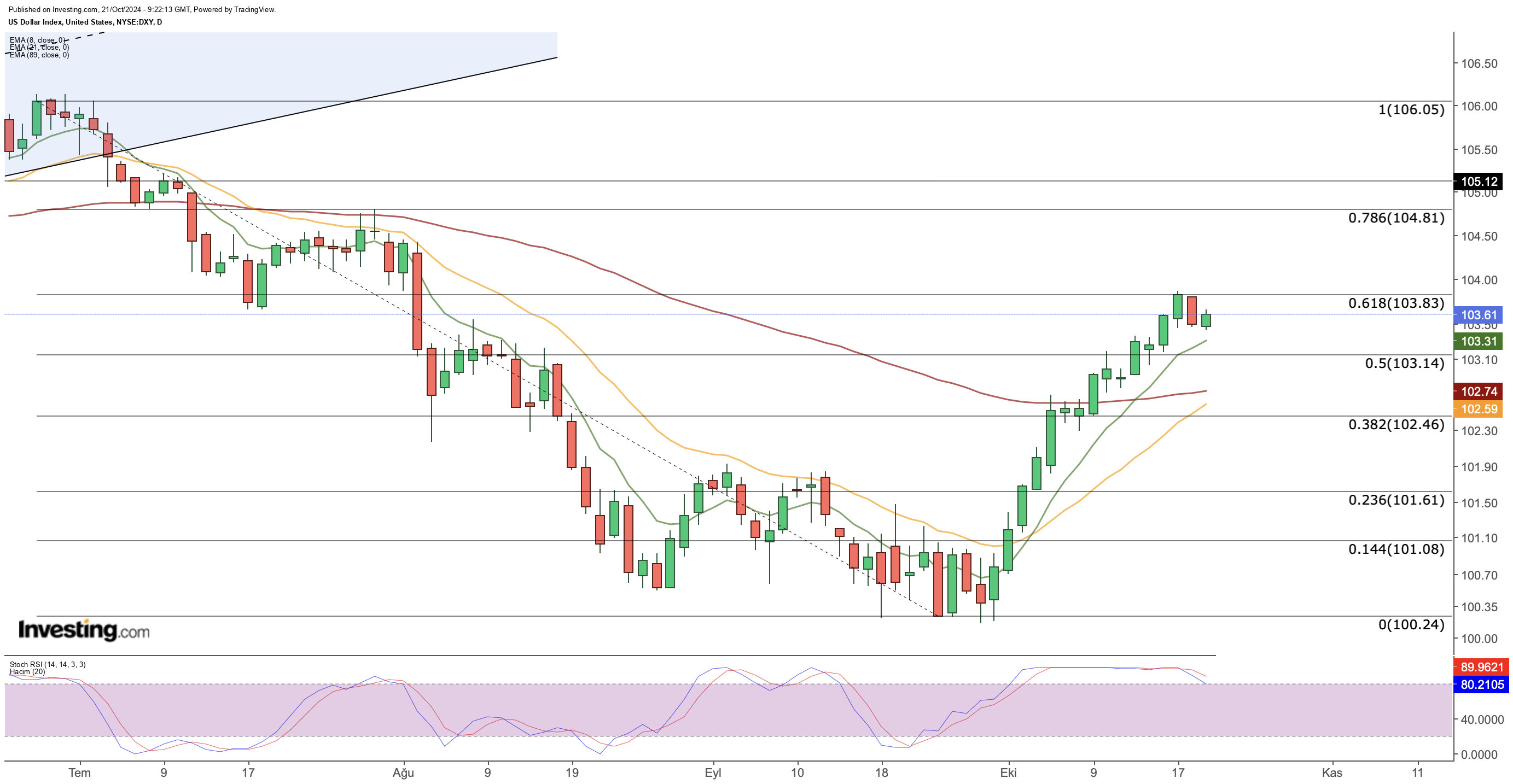
- A strong U.S. economy and geopolitical risks are key drivers for the US dollar’s current trajectory.
- Differing central bank approaches globally favor the dollar amid potential trade policy shifts.
- Technical indicators suggest crucial resistance levels could influence the dollar index’s movement this week.
- Looking for actionable trade ideas to navigate the current market volatility? Unlock access to InvestingPro’s AI-selected stock winners for under $9 a month!
The current trajectory remains influenced by a strong U.S. economy and the upcoming elections. Two major forces drive this trend: the rise in U.S. bond yields and the increasing possibility of former President Donald Trump’s re-election.
Expectations around Trump’s trade policies potentially boosting the U.S. economy while challenging rival countries play a crucial role in supporting the dollar in the short term. Moreover, recent robust data releases from the U.S. give the dollar an advantage over its competitors.
The U.S. economy demonstrates continued strength, highlighted by positive trends in key indicators like and the . However, markets closely watch the stance on rates. Strong U.S. data suggest that the Fed will proceed cautiously to achieve its targets. Additionally, geopolitical risks further reinforce the dollar’s strength against other major currencies.
Turning our attention to Europe, the (ECB) dovish stance has amplified expectations for rate cuts. Projections that the ECB will hit its targets by early 2025 suggest that rate cuts will persist until then. In contrast, there’s uncertainty regarding the Fed’s interest rate policy in the U.S., as a healthy U.S. economy allows the Fed to take a more measured approach. These differing strategies between two of the world’s leading central banks skew pricing in favor of the dollar.
Recently, geopolitical risks have significantly impacted the dollar’s performance. Threats of a potential Israeli-Iranian conflict in the Middle East and its repercussions on global energy markets continue to raise concerns. Such tensions could heighten demand for the dollar, seen as a safe-haven currency.
Geopolitical Risk on the Radar
Price action this week could be driven by geopolitical risks rather than by economic data, as the markets expect Israel to retaliate against Iran.
Israel’s potential military action against Iran might increase volatility across various commodities, particularly in oil markets. A sweeping impact on the energy sector from such an attack would arguably support the dollar further.
In the week ahead, while geopolitical developments remain under scrutiny, markets will also focus on macroeconomic data from the U.S. and Europe, including PMI data, , and . Additionally, speeches from Fed and ECB officials may influence price action.
US Dollar Index – Technical Outlook
The Dollar Index (DXY) kicked off October with an upswing, turning the bearish horizontal outlook from September around as dollar-friendly factors emerged.

Examining the recent downtrend of the dollar index, we see that the DXY hit a critical resistance level last week. After climbing to 103.8, a partial sell-off occurred at this point. Although these sales haven’t yet disrupted the trend, the index began the week on an uptick. The 103.8 resistance level remains crucial this week.
If the DXY holds the average support at 103.15 this week, it might continue its upward momentum. Achieving daily closes above 103.8 (Fib 0.618) raises the probability of advancing towards the next resistance at 104.8 (Fib 0.786).
Conversely, developments pushing the DXY below 103.15 could trigger a correction. In such a scenario, we might witness the DXY dip to around 102.5. However, the possibility of a correction hinges on global economic data and geopolitical stability. For now, the current outlook doesn’t favor a significant pullback for the dollar, possibly resulting in the index fluctuating between 103.15-103.8 this week. Breaking these boundaries with daily closings could spark momentum in the respective direction.
***
Disclaimer: This article is written for informational purposes only; it does not constitute a solicitation, offer, advice, counsel or recommendation to invest as such it is not intended to incentivize the purchase of assets in any way. I would like to remind you that any type of asset, is evaluated from multiple perspectives and is highly risky and therefore, any investment decision and the associated risk remains with the investor.


